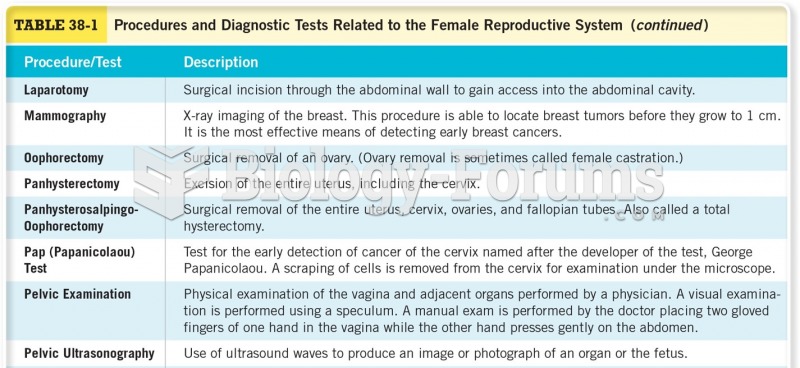SUBJECTIVE: A 35-year-old white female here for well-woman exam. She is (1)________, P2. None in the past year secondary to Depo-Provera use and a history of (2)________. Patient is sexually active with one partner. She is married. Last (3)________ 1 year ago, within normal limits. The patient has not had a baseline (4)________ done. She does self-breast exams sporadically. No history of uterine, (5)________, or breast cancer of herself or her family. Patient is currently, as noted, on Depo-Provera. A negative uterine pregnancy test was done today, and a prescription was filled. The patient has her Depo-Provera injection with her.
OBJECTIVE: Neck: Thyroid nonpalpable. Breasts: Symmetrical, mild (6)________ changes bilaterally, nontender without masses, no skin changes, no nipple discharge. Genitalia: (7)________ within normal limits, vagina normal, cervix normal in appearance and nontender. Pap done without incident. Bimanual: (8)________ nontender without fullness, (9)________ midline, anteverted, and nontender without mass. Rectal exam was not done.
LABORATORY DATA: (10)________ within normal limits.
ASSESSMENT AND PLAN: Health maintenance. Pap done. Recommend annual Pap. Patient referred for baseline mammogram. Self-breast exam every month recommended. Depo-Provera shot given. Recommend negative pregnancy test prior to every Depo-Provera injection. Follow up as needed.
Question 2
BILATERAL MAMMOGRAMS
DATE OF EVALUATION: (Current Date)
NAME OF TEST: Bilateral (1) ________, 4 views.
FINDINGS: Comparison is made with (2)________ obtained 2 and 4 years ago.
The breasts demonstrate a (3)________ pattern without evidence of a (4)________ mass or (5)_______ calcifications. Focal glandularity within the upper right breast, seen only in the mediolateral (6)________ view, appears slightly more (7)________ than it did on the most recent earlier exam. This probably represents a focus of normal glandular tissue; however, further evaluation is suggested. There are no clustered (8)________.
IMPRESSION: (9)________, upper right breast, for which a coned mediolateral oblique (10)________ is suggested.
This finding was discussed with the referring physician.






